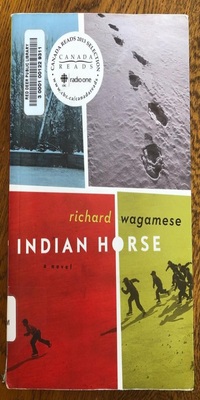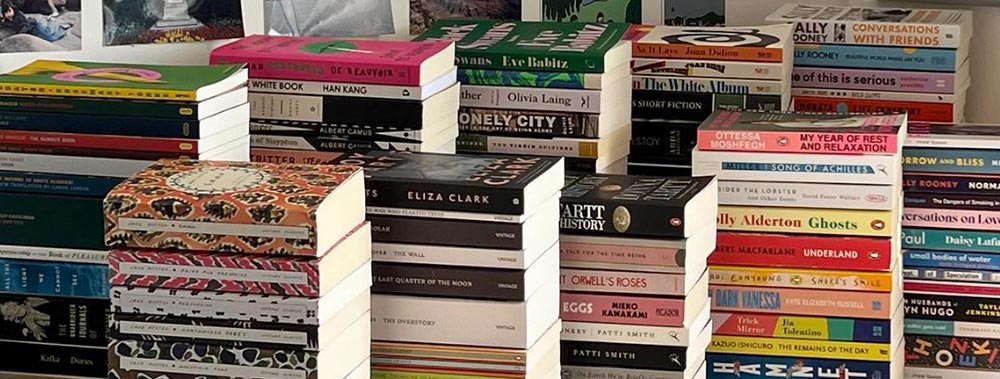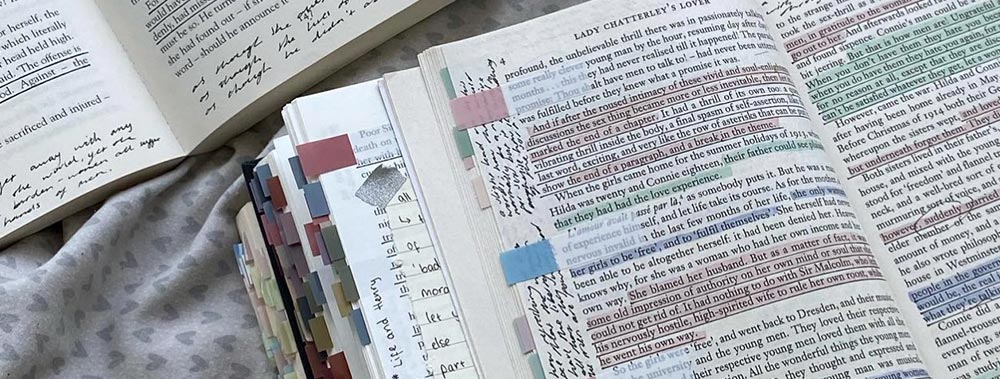Indian Horse: Summary, Plot, Characters, Literary Analysis & More
“Indian Horse” is a poignant novel by Richard Wagamese, first published in 2012.
This literary work stands as one of Wagamese’s greatest critical and popular successes. “Indian Horse” tells the story of Saul Indian Horse, an indigenous Canadian, who embarks on a remarkable journey through life filled with hardship and resilience.
The novel delves into the devastating impact of the Indian residential school system, where Saul is forcibly separated from his family and culture.
Saul discovers his extraordinary talent for ice hockey during his time at St. Jerome’s Indian Residential School, leading to a series of pivotal events in his life.
Throughout his journey, he grapples with identity, trauma, and the enduring connection to his roots, all set against the backdrop of Northern Ontario and the harsh realities faced by indigenous children.

"Indian Horse" as a symbol of strength and identity confronts the brutal legacy of residential schools, battles inner demons, and strives to find his place in the world.
Table of Contents
Summary The Plot Characters Key Themes Genres Language used Literary devices Summing upThe Plot
Saul Indian Horse’s life takes a dramatic turn when he is taken to Jerome’s Indian Residential School.
Amidst the adversity and cultural suppression, Saul discovers his passion for hockey. Virgil, a fellow student, invites Saul to play, and his exceptional skills garner attention.
As Saul progresses, he faces racial discrimination and begins to realize the profound impact of his indigenous heritage.
The story unfolds as Saul confronts the brutal legacy of residential schools, battles inner demons, and strives to find his place in the world, all while holding onto the name “Indian Horse” as a symbol of strength and identity.
Characters
In Richard Wagamese’s “Indian Horse,” a diverse cast of characters illuminates the profound impact of the Indian residential school system on indigenous lives.
These characters navigate a landscape marred by cultural erasure, trauma, and resilience.
Saul Indian Horse
Saul Indian Horse, the novel’s protagonist, is a resilient and talented indigenous Canadian who endures the horrors of the Jerome’s Indian Residential School.
His journey from a young boy to an adult is marked by his profound connection to hockey, which becomes both a source of strength and a reminder of the past.
Saul’s evolution reflects the enduring spirit of indigenous people.
Virgil
Virgil, Saul’s friend at the residential school, plays a pivotal role in Saul’s life. He invites Saul to join the hockey team, unlocking Saul’s remarkable talent.
Virgil represents the bonds of friendship and solidarity that can emerge even in the darkest of circumstances.
Father Leboutilier
Father Leboutilier, a figure of authority at the school, symbolizes the oppressive forces of the residential school system.
He enforces strict discipline and embodies the cruelty endured by indigenous children. His character highlights the systemic abuse faced by indigenous communities.
Martha
Martha, Saul’s wife in his adult years, provides stability and love as Saul grapples with his past trauma.
She represents the healing power of relationships and the hope for a brighter future beyond the shadows of the past.
Benjamin
Benjamin, Saul’s younger brother, shares the harsh experiences of residential school with Saul.
His tragic fate serves as a poignant reminder of the devastating consequences of the school system on families and communities.
Grandmother Naomi and Grandfather Shabogeesick
Saul’s grandparents, Naomi and Shabogeesick, offer a glimpse into the traditional indigenous way of life that Saul yearns to reconnect with.
Their wisdom and love for Saul underscore the importance of cultural heritage and family bonds in healing from trauma.
Fred Kelly
Fred Kelly, a fellow student at Jerome’s Indian Residential School, becomes a close friend of Saul Indian Horse.
Despite the challenging circumstances, Fred’s friendship brings solace to Saul during their time at the school.
Fred’s resilience and camaraderie exemplify the enduring spirit of indigenous children as they navigate the harsh realities of the residential school system.
Key Themes
A multitude of profound themes resonate throughout the narrative, shedding light on the complex and harrowing experiences of indigenous Canadians.
These themes explore identity, cultural preservation, trauma, and resilience.
The Theme of Identity
The theme of identity is central in “Indian Horse.” Saul Indian Horse’s journey of self-discovery mirrors the struggle of indigenous Canadians to retain their cultural identity in the face of forced assimilation.
Saul’s name, “Indian Horse,” becomes a symbol of his indigenous heritage, a source of strength that sustains him through adversity.
For instance, when he’s invited to play hockey, Saul realizes the importance of his identity, stating, “I’d be playing for my people. For all the Indian kids that got sent away to those places and got lost.”
The Theme of Cultural Preservation
The novel highlights the importance of cultural preservation as indigenous children like Saul are forcibly separated from their heritage at residential schools.
The Fish Clan, to which Saul’s family belongs, represents the deep-rooted connection to indigenous traditions and the struggle to maintain them.
Saul’s grandmother and grandfather, Naomi and Shabogeesick, embody the wisdom and traditions of their culture, emphasizing the significance of preserving indigenous knowledge.
The Theme of Trauma and Resilience
“Indian Horse” delves into the lasting trauma inflicted by the residential school system. Saul and his peers endure physical and emotional abuse, leaving deep scars.
However, the novel also underscores resilience as Saul and others find strength in each other and their shared experiences.
Saul’s journey to heal and reclaim his identity exemplifies the resilience of indigenous people in the face of immense hardship.
Genres in Indian Horse
The work defies conventional genre categorization, blending elements of historical fiction, coming-of-age, and sports literature to create a powerful narrative that transcends boundaries.
Historical Fiction
This novel is rooted in historical fiction, as it vividly portrays the harsh realities of the Indian residential school system in Northern Ontario.
The novel’s portrayal of the systemic abuse, cultural suppression, and trauma faced by indigenous children within these institutions brings a historical context to the forefront.
The historical backdrop serves as a stark reminder of the injustices endured by indigenous communities and their ongoing struggle for acknowledgment and justice.
Coming-of-Age
The novel encompasses the coming-of-age genre as it traces Saul Indian Horse’s journey from a young boy to an adult.
Saul’s experiences at the residential school, his discovery of hockey, and his pursuit of self-identity reflect the universal themes of growth, self-discovery, and resilience.
Through Saul’s personal evolution, readers witness the transformation of a young indigenous boy into a man who reconciles with his past and finds strength in his heritage.
Sports Literature
“Indian Horse” incorporates elements of sports literature, particularly in Saul’s passion for ice hockey.
The sport serves as a metaphor for Saul’s life journey, with hockey games representing both triumphs and challenges.
The intense focus on hockey allows the novel to explore themes of talent, ambition, and perseverance.
Saul’s pursuit of excellence on the ice becomes a symbol of his determination to overcome the adversities he faces in his life.
Language used in Indian Horse
Richard Wagamese employs a poignant and evocative writing style in “Indian Horse” to immerse readers in the emotional journey of the protagonist, Saul Indian Horse.
Through vivid descriptions and Saul’s introspective narrative, Wagamese masterfully captures the atmosphere of despair at Jerome’s Indian Residential School and the raw emotions Saul experiences as he begins to grapple with the traumatic events of his past.
The language used is both haunting and poetic, allowing readers to empathize with Saul’s pain and resilience, making the narrative a powerful exploration of the human spirit in the face of adversity.
Literary devices in Indian Horse
The author employs a rich array of literary devices to enhance the narrative.
These devices include symbolism, where elements like the “Indian Horse” family name symbolize Saul’s indigenous heritage and resilience.
Wagamese also utilizes foreshadowing to create anticipation and emotional depth, particularly in Saul’s journey. The use of metaphor and allegory deepens the story’s meaning, shedding light on the broader themes of identity, cultural preservation, and trauma.
These literary devices work harmoniously to elevate the storytelling, making “Indian Horse” a profoundly moving and thought-provoking work of fiction.
Similes
When Saul begins with the story of his grandfather Shabogeesick, he describes Shabogeesick’s voice “like the sweet call of a loon on Gods Lake,” drawing a vivid parallel between his grandfather’s voice and the serene sound of nature.
Similarly, when Virgil invites Saul to play hockey, the invitation is likened to “an unexpected lifeline thrown from a capsized boat.”
These similes infuse the storytelling with sensory imagery, making the scenes more immersive, relatable, and emotionally resonant, allowing readers to better connect with the characters and their experiences.
Metaphors
When Saul refuses to let go of his indigenous identity, he becomes a metaphorical embodiment of resistance against cultural erasure, as “he stood like a sentinel guarding the past.”
Saul’s decisions (for example when Saul decides to go his own way) are often compared to the strategic moves of a seasoned chess player, symbolizing his calculated and deliberate choices in navigating a world marred by prejudice.
The metaphorical significance of “Indian Horse won” not only celebrates hockey victories but also serves as a broader metaphor for Saul’s triumph over adversity, his reclamation of identity, and the resilience of indigenous people.
These metaphors enhance the storytelling, imbuing it with depth and resonance.
Analogies
When Saul notices a ball of tape on the ice, it’s likened to “a chunk of glacier that had calved off a berg.”
This analogy vividly portrays the contrast between the small, discarded object and the vastness of the ice, emphasizing Saul’s keen observation skills. As an adult, Saul and his life is compared to “a tapestry, woven from threads of loss and resilience.”
This analogy captures the intricate interplay of hardships and strength in his journey. Such analogies enrich the narrative, offering readers deeper insight into the characters and their experiences.
Imagery
In “Indian Horse,” Richard Wagamese masterfully employs vivid imagery to transport readers into the sensory world of his characters. When Saul manages the transition to adulthood, the image of “the new dawn centre” evokes a sense of renewal and hope.
The portrayal of Saul’s wife Martha is laden with sensory details, from the fragrance of her cooking to the warmth of her embrace.
This imagery immerses readers in the sights, sounds, smells, and emotions of the narrative, forging a deep connection to the characters and their experiences, enhancing the overall richness of the storytelling.
Symbolism
Numerous symbolic elements weave throughout the narrative, offering deeper connections to overarching themes.
The physical world symbolizes the tangible and intangible aspects of indigenous culture and heritage, emphasizing their enduring presence throughout Saul’s entire life.
The “horse turds” represent both the harsh realities and the unexpected treasures hidden within Saul’s journey. The white team symbolizes the racial divide and discrimination Saul faces in the hockey world.
The act of “harvesting rice” embodies the struggle for cultural preservation. These symbols enrich the narrative by highlighting the broader themes of identity, cultural erasure, and resilience.
Personification
The physical abuse inflicted upon Saul and other indigenous children at the hands of the residential school system personifies the cruelty inherent in the institutions.
“White Canadians” personify the oppressive forces behind the cultural suppression of indigenous communities.
Saul’s great grandfather personifies ancestral wisdom and cultural heritage, guiding Saul on his path.
These instances of personification add depth to the characters and setting, allowing readers to perceive the impact of systemic abuse, the power dynamics at play, and the enduring connection to tradition within the narrative.
Hyperbole
The mention of Father Quinney and the tragic choice to commit suicide within the context of the residential school system exemplifies the extreme despair and hopelessness experienced by indigenous children.
While “Fred lives” might seem like a simple statement, it is a powerful hyperbole, emphasizing the resilience and triumph over adversity. The reference to a “film adaptation” could be seen as an exaggeration, underlining the potential for the story’s widespread recognition.
These instances of hyperbole intensify the emotional weight of the narrative, drawing attention to critical aspects of the characters’ experiences and the broader societal issues they represent.
Irony
Dramatic irony emerges when older boys at the residential school, who are expected to be protectors, instead perpetrate abuse, highlighting the stark contrast between societal expectations and harsh realities.
Situational irony is evident in Benjamin’s health deteriorating as he seeks refuge in the institution meant to educate and care for him, exposing the tragic contradiction within the residential school system.
Irony also surfaces when Saul visits St. Jerome’s Indian Residential School, a place of suffering, contrasting starkly with the innocent imagery of visiting a school.
Such instances of irony evoke powerful emotions and provoke thought about the profound injustices faced by indigenous children.
Juxtaposition
The stark contrast between Saul’s parents’ life on the serene Winnipeg River and Saul’s harrowing experiences in the residential school highlights the jarring impact of cultural displacement and trauma.
Juxtaposing Saul’s father and his character, seemingly distant yet inherently loving, with Saul’s own development underscores the complexity of their relationship, revealing layers of emotion and generational struggle.
This literary technique fosters a deeper understanding of the characters’ experiences and the broader themes of cultural identity, resilience, and the enduring impact of historical trauma, inviting readers to reflect upon the intricate web of human emotions and experiences within the story.
Paradox
The “Iron Sister,” a term used for the Catholic school, paradoxically represents both the facade of religious education and the harsh reality of abuse and cultural suppression.
The paradox of Saul entering the residential school at a young age illustrates the tragedy of childhood innocence being marred by trauma.
The notion of “Indian yard” within the confines of the residential school paradoxically symbolizes both captivity and the resilient spirit of indigenous children.
These paradoxes reveal the stark contradictions embedded in the indigenous residential school experience, emphasizing the enduring strength of survivors amidst profound adversity.
Allusion
The concept of “Christian burial” alludes to the religious context of the residential schools, highlighting the imposition of Christian values and practices upon indigenous children.
When Saul returns to the residential school and the treatment of his “moose teammates” evoke allusions to the harsh realities faced by residential school survivors, akin to prisoners of war returning to captivity.
The references to Saul’s feelings (for example when Saul feels bad) when encountering his brother’s body and “Benjamin’s body” allude to the profound emotional and psychological toll of the residential school system, reminiscent of the aftermath of war, accentuating the depth of trauma experienced by its victims.
Allegory
The treatment facility, where Saul confronts his struggles with alcohol and trauma, serves as an allegory for the healing and recovery process.
The “rock cairn” symbolizes the collective memory and cultural heritage of indigenous people. Sister Ignacia”embodies the oppressive forces within the residential school system. The unmarked graves represent the hidden tragedies and the need for acknowledgment.
The transformation of Saul into a star player signifies his journey of resilience and reclamation of identity, all of which serve as allegorical elements that contribute to the depth and complexity of the story.
Puns
“Indian Horse” by Richard Wagamese does not prominently feature puns. The narrative is more focused on exploring profound themes and conveying the emotional weight of the story, rather than employing wordplay or humor through puns.
Repetition
The mention of “a treatment facility run by other Fish Clan members” represents a thematic repetition in the narrative.
This repetition emphasizes the resilience and support within the indigenous community, as members of the same clan come together to aid Saul on his path to recovery.
It underscores the importance of cultural connections and solidarity in healing from the trauma of the residential school system, adding depth and emotional resonance to the narrative.
The Use of Dialogue
During moments like when they harvest rice, the conversations among characters unveil their connection to indigenous traditions, emphasizing the importance of cultural preservation.
As Saul starts to worry and eventually Saul leaves, the dialogues capture the inner turmoil and conflicts within the characters, reflecting their struggles with identity, trauma, and the desire to break free from oppressive systems.
Through dialogue, the novel brings forth the depth of its characters, explores its themes, and adds layers of tension to the narrative.
Word Play
In “Indian Horse” by Richard Wagamese, wordplay techniques like puns and double entendre are not prominently featured.
The narrative primarily focuses on exploring the profound themes, emotions, and experiences of the characters within the context of indigenous life and the impact of the residential school system.
Parallelism
Parallelism is subtly woven into the narrative, enhancing its structure and message. As Saul develops and undergoes personal growth, the parallel story of Naomi and Saul staying at Gods Lake underscores the importance of generational continuity and cultural preservation.
When she tells Saul about their family’s traditions and heritage, it mirrors Saul’s own journey of self-discovery and reconnection with his indigenous roots.
This parallelism serves to emphasize the intergenerational transmission of knowledge and values, highlighting the enduring connection to indigenous culture, enriching the story’s themes of identity, resilience, and cultural heritage.
Rhetorical Devices
Rhetorical devices, such as rhetorical questions and parallelism, are employed for persuasive effect.
For instance, when Saul begins his journey of self-discovery, he asks rhetorical questions like “Who am I?” These questions evoke introspection and provoke readers to contemplate the profound themes of identity and cultural heritage.
Parallelism is subtly used to underscore the importance of Saul’s journey, mirroring his internal struggles with external experiences.
These rhetorical devices engage readers emotionally and intellectually, encouraging them to reflect on the novel’s powerful messages about resilience, cultural preservation, and the enduring strength of indigenous identity.
Indian Horse: FAQs
This section provides answers to common questions about Richard Wagamese’s powerful novel, “Indian Horse,” offering insights into its themes, characters, and impact.
What is the main message of Indian Horse?
The main message of “Indian Horse” by Richard Wagamese is a poignant exploration of the enduring trauma of indigenous peoples in Canada, focusing on the life of Saul Indian Horse, a residential school survivor and talented hockey player, as he grapples with the legacy of abuse, cultural loss, and the healing power of identity and connection to one’s heritage.
How is the school described in “Indian Horse”?
St. Jerome’s Indian Residential School is described as a place of harsh discipline, cultural suppression, and profound trauma for indigenous children like Saul Indian Horse. It’s portrayed as a symbol of systemic injustice.
What was the plot twist in Indian Horse?
The plot twist in “Indian Horse” is the revelation of Saul’s traumatic past at the residential school, which profoundly influences his life and his journey of healing and self-discovery.
What does the horse symbolize in Indian Horse?
The horse symbolizes Saul’s indigenous heritage, resilience, and identity. It serves as a source of strength, representing his connection to his roots and his ability to overcome adversity.
What is the main conflict in Indian Horse?
The main conflict in “Indian Horse” revolves around Saul’s struggle to reconcile his indigenous heritage with the trauma he endured at the residential school, as he seeks to reclaim his identity and find healing amid a society marked by discrimination and prejudice.
Summing up: Indian Horse: Summary, Plot & More
As you can now see from this “Indian Horse” summary, the novel powerfully exposes the devastating legacy of the residential school system and the enduring strength of indigenous identity.
It weaves a tapestry of trauma, resilience, and cultural preservation that resonates with readers of all backgrounds.
The book’s appeal lies in its ability to evoke empathy, provoke introspection, and spark vital conversations about historical injustices and the importance of acknowledging and healing from them.
It stands as a testament to the enduring power of storytelling to illuminate the human experience.
Other Notable Works by Richard Wagamese
If you are interested in “Indian Horse”, you may be interested in other works by Richard Wagamese including:
- “Medicine Walk” (2014): A moving novel that explores themes of family, identity, and reconciliation as a father and son embark on a journey of self-discovery.
- “Keeper’n Me” (1994): An autobiographical novel that delves into Wagamese’s own experiences of growing up in foster homes and his journey to reconnect with his indigenous roots.
- “One Story, One Song” (2011): A collection of reflective essays and stories that offer profound insights into Wagamese’s life, indigenous culture, and the power of storytelling.
- “Embers: One Ojibway’s Meditations” (2016): A collection of meditations and reflections that draw on indigenous wisdom to provide guidance on living a meaningful and purposeful life.
- “Ragged Company” (2008): A novel that explores the unlikely friendship of a group of homeless individuals who find solace and connection in each other’s company.
These works showcase Richard Wagamese’s talent for storytelling and his ability to address important themes of identity, cultural heritage, and resilience in the face of adversity.







